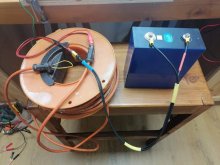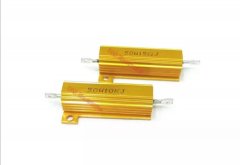BarkingSpider
Carbon Lifeform
While balancing or just in general use, I sometimes want to lower the voltage on a particular cell in my battery bank quickly and safely.
After trying numerous methods, I found this approach to be quick and easy and it does not require any special equipment or tools.
I used the household extension lead in the picture below with a brand new 280ah LifePO4 cell.
I used an old 14 gauge 50ft cord with a simple loopback (yellow wire below) making the wire 100ft long.
I connected to the lead Live/Neg prongs with alligator clips using some existing cables from my garage.
You could connect the wires many different ways, just ensure the connections are solid.
The total wire resistance when tested, measured 2 ohms, 1 - 10 ohms is the sweetspot.
There were no sparks, nothing eventful connecting the wires.
No wires got hot, not even slightly warm
I checked the voltage every minute with a multimeter
The voltage dropped from 3.6v to 3.3v in 15 minutes
All in all, a success. I would recommend this method.

After trying numerous methods, I found this approach to be quick and easy and it does not require any special equipment or tools.
I used the household extension lead in the picture below with a brand new 280ah LifePO4 cell.
I used an old 14 gauge 50ft cord with a simple loopback (yellow wire below) making the wire 100ft long.
I connected to the lead Live/Neg prongs with alligator clips using some existing cables from my garage.
You could connect the wires many different ways, just ensure the connections are solid.
The total wire resistance when tested, measured 2 ohms, 1 - 10 ohms is the sweetspot.
There were no sparks, nothing eventful connecting the wires.
No wires got hot, not even slightly warm
I checked the voltage every minute with a multimeter
The voltage dropped from 3.6v to 3.3v in 15 minutes
All in all, a success. I would recommend this method.

Last edited:



